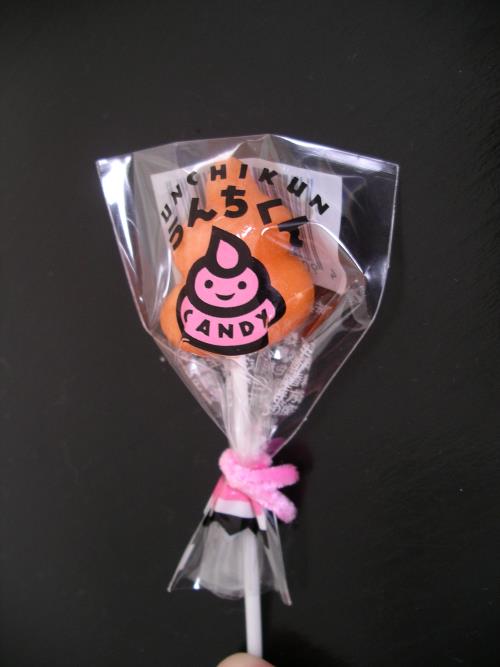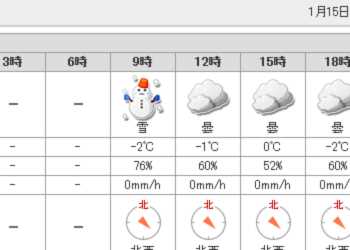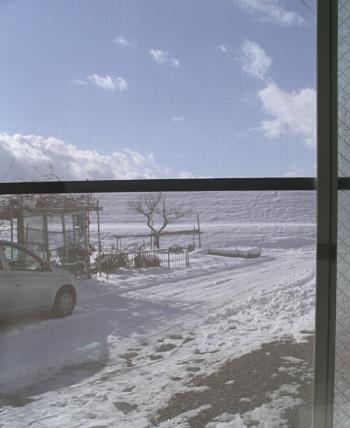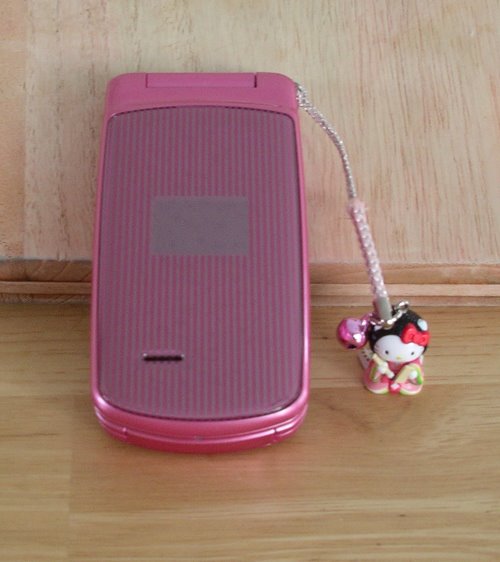| |
Tuesday, February 26, 2008, 9:02 PM Strange JapanPosted by stefanie One of my childhood neighbors died recently, giving me occasion to go shopping for a sympathy card. I stood at the very small greeting card display in our local stationery store for a good while before I concluded that they had no sympathy cards. Not that they had run out, but that they simply didn't carry them. Prior to then, it hadn't occurred to me that the Japanese wouldn't send sympathy cards upon someone's death, but that appeared to be the case. I asked some of my students about it later, and was quite surprised by their answer. We've never heard of sympathy cards, they said. We send telegrams when people die.
Telegrams? The things Western Union stopped sending about two years ago because technology had rendered them obsolete? As it turns out, telegrams are used frequently in Japan to acknowledge major life events. Deaths, births, marriages, retirements ¡½ all are occasions for telegrams. You can even choose special papers for your messages or stuffed animals to accompany them. And, ironically, you can order them on the internet.
[ 1 comment ] permalink
Monday, February 25, 2008, 12:34 PM Strange JapanPosted by matthew It's always amusing to see English — and made-up "English" words — in Japanese brand names and advertising. They mean well, but often miss the connotations of the English they choose. For example, there is a line of car accessories called "Blang". My reaction? "Past tense? What is that, like last year's style?" It's actually a pretty neat word, but alas, I was not the first to think of it.
Friday, February 22, 2008, 8:34 PM Strange JapanPosted by stefanie Parking in Japan (well, in Kitakami anyway) is an interesting thing. There are lots and garages, of course, but these seem to be mostly used for daily parking or at shopping centers. There aren't meters anywhere, which sort of makes sense if you consider that streets here are quite narrow ¡½ why invite people to clog the space available for traffic to flow? The lack of meters isn't a deterrent, though. It's common practice to simply pull over to the curb and leave your car there while you run into the store to take care of business. Everyone just drives around you.
For someone used to restrictions on on-street parking, this just seems kind of wrong. In fact, I avoided doing it for the first couple of months that we had the car because I felt like kind of a jerk doing it. "I'm just leaving my car here in the road while I get the dry cleaning! Yes, I know the road is one-and-a-half lanes wide, but just go around!" Now that I'm used to it, I kind of like it. Everyone knows that's what you do, so no one's trying to run you over, giving you the stinkeye, and/or honking at you. And it's nice to be able to stash the car and run a quick errand without hunting for parking.
The random car-leaving is especially interesting in light of the fact that to even own a car in Japan, you must prove that you have a place to park it. You have to tell the dealer where your space is, then he has to provide details about the space, like location, to the police so that they can verify that it is, in fact, your space. Only then can you actually buy the car. So, once you've proven that you have a place to park your car, you can . . . park it anywhere you like.
[ 3 comments ] permalink
What could possibly say "Happy Valentine's Day" better than two cans of beer? How about two cans of beer decorated with a ribbon and a rhinestone heart? 
Yesterday was Setsubun, the day before the beginning of the "spring season" in Japan. Setsubun is a day akin to New Year's, when people engage in rituals to chase evil away from their homes and bring good fortune in during the year. The most famous ritual is mamemaki, or "bean throwing." Mamemaki involves the head of the household throwing beans out the door of the home at someone dressed as a demon, while the family members chant: " Oni wa soto! Fuku wa uchi!" ("Demons out! Good luck in!"). You're also supposed to eat one bean for each year of your life to bring good luck. Here in Kitakami, stores were selling peanuts to be used for mamemaki, rather than soybeans. We didn't do mamemaki at home (scaring demons away is why we have big fuzzy dogs), but we did partake in the ritual of eating ehomaki at Hige-oyaji's place. This tradition allegedly originated in the Kansai region, but has spread to other areas of Japan. Ehomaki is a fat sushi roll (called futomaki on non- Setsubun days). If you can eat the entire uncut roll while praying, and without speaking, it is believed that you will have good fortune throughout the year. You eat the ehomaki while facing the eho (direction of good fortune) for the year. The eho is determined by the year of the Chinese zodiac; this year, for the year of the mouse, the direction was south-southeast. Hige-oyaji had a fancy Setsubun compass, set with zodiac symbols and their related directions, to tell us what direction to face. Unfortunately, I didn't completely understand what was going on, so I ate most of my ehomaki facing a wrong direction. Oops.
On Sunday, we went bowling as part of a group event. Bowling in Japan is no different from bowling in the States, down to the clownish rental shoes.  We haven't gone bowling in a very long time, so it took us a few frames to get back into it. Our team actually did pretty well ¡½ three of us broke 100 on the first game, and we all did on the second. The event was a fundraiser for the local sign language club, some of whom we've met through local friends. In between turns, they were teaching us little bits of Japanese Sign Language, including the signs for "Washington" and "America." As it turns out, the frowny face accompanying a blown spare is an international sign. At the end of the tournament, the group gave prizes to each participant, ranked from highest score to lowest; I think we were all in the top twenty. Also, people who threw gutter balls had the dubious distinction of getting extra prizes based on the number of gutters thrown. Matthew got one:  Yes, it's candy poop on a stick. A lollipoop, if you will.
You can find almost anything your heart desires in vending machines in Japan: soda, beer, hot canned soup, 10-kilo bags of rice. . .  This machine has gotten some play before, courtesy of the late, great, Kitakami Photoblog ( Konnichiwa, Julia- san!).
[ 5 comments ] permalink
Strawberry Fields for Winter
Last weekend, I had to make dessert for a dinner party. Wanting to do something with fruit, I headed to the produce section, thinking about citrus or maybe pears. Those thoughts were blown out of my head by the sight of row upon row of . . . bright red strawberries. And a big sign proclaiming the arrival of the "Strawberry Fair." In Japan, winter is the high season of the strawberry. Strawberries sit in little boxes in displays at the front of the store, announcing their provenance and price ("Fresh Strawberries from Sendai! 680 yen!"), drawing attention away from all the other fruits. Every patisserie sets out an array of strawberried treats ¡½ filled, topped, stuffed with jam, you name it. Strawberry KitKats, strawberry danish, and strawberry eclairs are everywhere. Traditional sweets, like daifuku ( anko-filled mochi balls) contain strawberries at this time of year, too. The prominence of strawberries in January is very strange to me because, as for most Americans, strawberries scream "summer!" It seems somehow wrong to see them everywhere when we're still rocking our snowboots every day. A bit of research revealed that in many parts of Japan, strawberries alternate with rice as a part-of-the-year crop, so it's not completely out of the question that they would be reaching peak over the winter months. In fact, the strawberries we've eaten were grown in Japan and were quite delicious. On the other hand, it makes me think: perhaps the strawberry producers are in cahoots with the weathermen ("If we sell strawberries during the winter, they'll make people think of summer! They'll forget that the temperature hasn't gotten above freezing in six days, and all will be right as rain!).
Let's take a look at today's weather, shall we? Here's the weather report. It's pretty typical for winter in Tohoku: snow in the morning, and cloudy all day after that.  Now, let's take a look out the window:  That's about how it goes with the weather forecasts here. They aren't just inaccurate, they're willfully dishonest, or at least it seems so. My theory is that the weathermen are part of a secret government program to emotionally control the people and prevent revolt. When it's nice out (or will be), the forecast shows nasty weather, so that everyone gets a pleasant surprise and is happy. When it's nasty out, the forecast shows nice weather tomorrow or the next day, which gives people hope (even though the nice weather doesn't actually arrive until three weeks later).
Many people in Japan, male and female alike, hang multiple small mascots from their keitai (cell phones). Mascots range from characters associated with the phone company to well-known comic, manga, or anime characters. I've only got one on my cute pink phone.  It's Hello Kitty, of course, but she's special. Sanrio makes Hello Kitty merchandise specific to each of the prefectures, representing events or products for which the prefecture is known. This Kitty-chan represents the famous Heian period poetess, Komachi, who according to legend was from what is now Akita Prefecture. Komachi was also regarded as a great beauty, which Matthew thinks makes her name particularly fitting for the Akita Shinkansen. 
Back Next
|
|








 Calendar
Calendar




